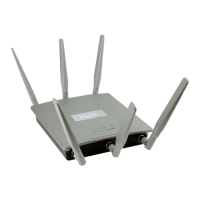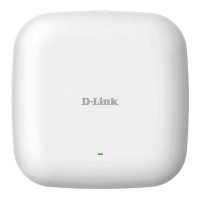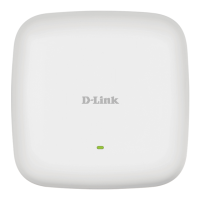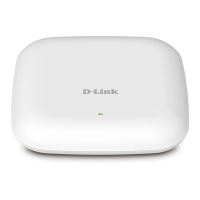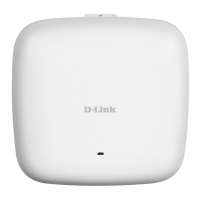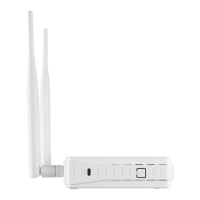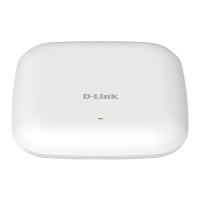6D-Link DAP-2690 User Manual
Section 1 - Product Overview
• Four dierent operation modes - Capable of operating in one of four dierent operation modes to meet your wireless networking needs:
Access Point, WDS with AP, WDS, or Wireless Client.
• Faster wireless networking with the 802.11n standard to provide a maximum wireless signal rate of up to 300 Mbps*.
• Compatible with the 802.11b standard to provide a wireless data rate of up to 11 Mbps, allowing you to migrate your system to the 802.11n
and 802.11g standards on your own schedule without sacricing connectivity.
• Compatible with the 802.11g standard to provide a wireless data rate of up to 54 Mbps in the 2.4 GHz frequency range.
• Compatible with the 802.11a standard to provide a wireless data rate of up to 54 Mbps in the 5 GHz frequency range.
• Better security with WPA - The DAP-2690 can securely connect wireless clients on the network using WPA (Wi-Fi Protected Access) to provide
a much higher level of security for your data and communications than its previous versions.
• AP Manager II management software - The real-time display of the network's topology and AP’s information makes network conguration
and management quick and simple.
• SNMP for management - The DAP-2690 is not just fast, but also supports SNMP v.3 for better network management. Superior wireless AP
manager software is bundled with the DAP-2690 for network conguration and rmware upgrade. Systems administrators can also set up
the DAP-2690 easily with the Web-based conguration. A D-Link D-View 6.0 module will be downloadable for network administration and
real-time network trac monitoring with D-Link D-View 6.0 software.
• Utilizes OFDM technology (Orthogonal Frequency Division Multiplexing).
• Supports 802.3af Power over Ethernet.
• Includes one 10/100/1000 Ethernet port.
• Operates in the 2.4~2.5 GHz or 5.15~5.85 GHz** frequency ranges.
• Web-based interface for managing and conguring.
Features and Benets
*Maximum wireless signal rate derived from IEEE Standard 802.11g, 802.11a and 802.11n specications. Actual data throughput will vary. Network conditions and environmental
factors, including volume of network trac, building materials and construction, and network overhead, lower actual data throughput rate. Environmental conditions will
adversely aect wireless signal range.
**Please note that operating frequency ranges vary depending on the regulations of individual countries and jurisdictions. The DAP-2690 isn’t supported in the 5.25~5.35 GHz
and 5.47 ~ 5.725 GHz frequency ranges in some regions.

